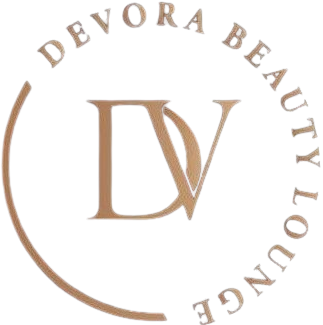Choosing the right hair color is not simply about following trends. It’s about understanding your own skin tone, hair structure, and lifestyle so that the shade you choose looks natural, enhances your features, and remains easy to maintain. At Devora Beauty Salon & Lounge in Bur Dubai, our color experts approach every service with a mix of artistry and science.
This guide combines professional insights, basic color theory, and practical advice so you can make an informed decision before your next appointment.
Why Hair Color Selection Matters
Every person’s hair has two main pigments:
- Eumelanin (brown/black)
- Pheomelanin (red/yellow)
Lightening hair reveals underlying warmth (the red/gold pigments). Correcting or enhancing that warmth relies on color theory: cool tones neutralize warm undertones and vice versa. Choosing the right combination ensures your new color complements your complexion rather than fights against it.
Step 1: Identify Your Skin Undertone
Your undertone stays consistent even if your surface color changes (e.g., tanning). A few simple tests can help:
- Vein Test: Green veins suggest warm undertones; blue or purple veins indicate cool; a mix may mean neutral.
- Jewelry Test: Yellow gold flatters warm undertones; silver flatters cool; both suit neutral undertones.
- White Fabric Test: Pure white enhances cool tones; off-white or cream favors warm; both work with neutral.
If you’re still unsure, chances are you fall in the neutral category — lucky you, because most shades will work well.
Step 2: Match Shades to Undertones
Warm undertones (golden, olive, peach):
- Best choices: honey, caramel, chestnut, warm mocha, copper, strawberry blonde.
- Why: Warm pigments echo your natural tone and make skin glow.
- Tip: Avoid very ashy shades, which may appear dull against warm skin.
Cool undertones (pink, rosy, blue):
- Best choices: ash brown, mushroom brunette, sandy blonde, espresso, blue-black, burgundy with a violet base.
- Why: Cool tones balance redness and brighten complexion.
- Tip: Avoid heavy gold or copper near the face — they may exaggerate redness.
Neutral undertones:
- You can mix warm and cool shades.
- Best choices: balanced mocha, soft beige balayage, neutral browns with subtle gold or ash highlights.
Step 3: Consider Depth (Light vs. Dark)
The level (lightness or darkness) should harmonize with your skin depth:
- Fair skin: Medium shades often look softer than ultra-light or very dark extremes.
- Medium skin: Rich chocolates, bronzes, and dark brunettes offer a healthy, natural finish.
- Deep skin: Espresso, blue-black, mahogany, and cinnamon highlights create beautiful contrast without looking flat.
A safe guideline: adjust no more than two to three levels lighter or darker than your natural shade at one time.
Step 4: Think About Lifestyle and Maintenance
- Grey coverage: Permanent color offers full coverage; demi-permanent offers softer blending.
- Busy schedule: Balayage or root-shadowing stretches time between touch-ups.
- Frequent swimming or sun exposure: Lighter or fashion colors fade faster and need extra care.
- Professional settings: Subtle mocha, espresso, and beige highlights often meet office dress codes while still feeling fresh.
Step 5: Choose the Right Technique
- Balayage: Hand-painted, sun-kissed effects with soft grow-out.
- Foil highlights: Precise lifting and brightness where desired.
- Gloss/Toner: Adds shine and refines warmth or coolness.
- Color Melt: Seamless blending from root to tip, great for soft, modern looks.
Step 6: Professional Color Lines and Why They Matter
Not all color is created equal. At Devora Beauty Salon & Lounge, we work with trusted professional-grade color ranges known for their reliability and shade variety. Popular salon brands used globally include:
- Wella Professionals: Wide shade families with predictable results and excellent grey coverage.
- L’Oréal Professionnel: Balanced tones, ammonia-free options, and strong support for advanced techniques like balayage.
- Schwarzkopf Professional: Known for precise lifting performance and true-to-swatch tones.
These lines evolve with technology, offering better conditioning agents, bond protectors, and shine enhancers. In every consultation, we select formulas based on your hair history, texture, and goals.
Step 7: Safety and Aftercare
- Always patch-test 48 hours before trying a new formula.
- Use bond protectors during lightening to reduce breakage.
- Commit to sulfate-free, color-safe shampoos and regular conditioning.
- Limit heat styling or always use heat protection to extend color vibrancy.
Quick Reference: Undertone + Shade Matches
| Skin Depth | Warm Undertone | Cool Undertone | Neutral Undertone |
|---|---|---|---|
| Fair | Strawberry blonde, honey brown | Pearl blonde, ash light brown | Beige blonde, soft mocha |
| Medium | Caramel brunette, chestnut | Cool chocolate, espresso | Neutral brown with soft gold or ash |
| Deep | Cinnamon, dark chocolate highlights | Blue-black, violet burgundy | Mocha with balanced highlights |
The Devora Consultation Experience
When you visit us at Devora Beauty Salon & Lounge, Bur Dubai, we:
- Assess your undertone in natural light.
- Perform a strand and porosity test.
- Discuss maintenance frequency, lifestyle, and budget.
- Create a tailored home-care plan, including shampoo, mask, leave-in, and toner schedule.
Final Thoughts
Choosing the perfect hair color is equal parts science, art, and self-expression. By aligning shade, undertone, technique, and care, you get results that not only look stunning but also keep your hair healthy.
If you are ready for a personalized color session, visit Devora Beauty Salon & Lounge, Al Mankhool, Bur Dubai, or call +971 4 397 7763. Bring your inspiration photos, and let’s design the shade that feels like it was made for you — because it will be.
